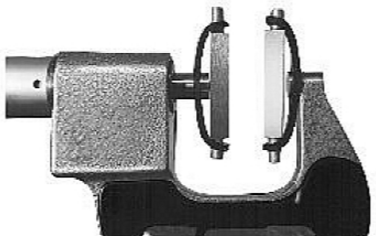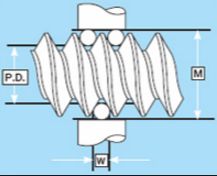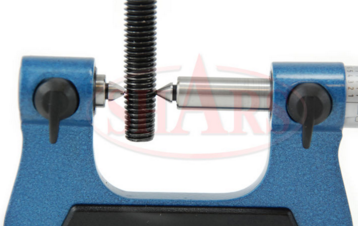- Joined
- Nov 23, 2014
- Messages
- 2,607
Curious as to what the advantages/disadvantages are between each of these methods for checking threads. I've got a set of wires, only used them once. Used a couple of O-rings on the ends to hold them to the work when checking, but still seemed to be a cumbersome method.
I like the simple concept of the triangles, but it looks like you're checking across the helix, not the true root diameter. Plus, the sharp edged triangles don't necessarily bottom out at the root of the threads. There are probably charts out there for your target dimension or maybe the simplest way is to measure a known good thread and cut to match? Advantage is, like the wires, they are good for a wide range of threads and diameters.
Or do I bite the bullet and pick up a set of thread mics (Shars 0-1" are under $60, 1"-2" around $70)? I don't do a tremendous amount of single point threading but don't mind spending the money. My shop will eventually go to my son.
Or, my normal "go to" method of making a few thousandths pass and checking with the mating part? It's a little cumbersome having to slide the tail stock away from the end of the work but it naturally works well assuming I have the mating part completed and it can be brought to the lathe instead of the work being removed from the chuck and checked on the mating part.
Just curious which method the more experienced guys use. I realize there probably isn't a best method for all occasions, looking for something I may have missed (strongly leaning toward picking up the mics).
Thanks for the guidance, Bruce
 Triangles
Triangles
 Wires
Wires
 Mic
Mic
I like the simple concept of the triangles, but it looks like you're checking across the helix, not the true root diameter. Plus, the sharp edged triangles don't necessarily bottom out at the root of the threads. There are probably charts out there for your target dimension or maybe the simplest way is to measure a known good thread and cut to match? Advantage is, like the wires, they are good for a wide range of threads and diameters.
Or do I bite the bullet and pick up a set of thread mics (Shars 0-1" are under $60, 1"-2" around $70)? I don't do a tremendous amount of single point threading but don't mind spending the money. My shop will eventually go to my son.
Or, my normal "go to" method of making a few thousandths pass and checking with the mating part? It's a little cumbersome having to slide the tail stock away from the end of the work but it naturally works well assuming I have the mating part completed and it can be brought to the lathe instead of the work being removed from the chuck and checked on the mating part.
Just curious which method the more experienced guys use. I realize there probably isn't a best method for all occasions, looking for something I may have missed (strongly leaning toward picking up the mics).
Thanks for the guidance, Bruce
 Triangles
Triangles Wires
Wires Mic
Mic

